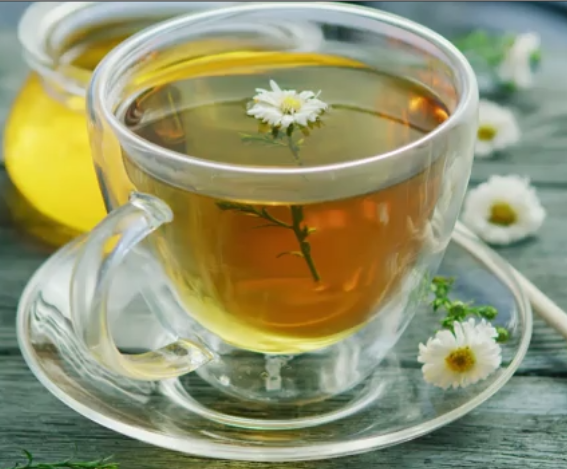Chamomile - Matricaria recutita
The genus Chamomile includes several species.

- Matricaria recutita or German chamomile, is the most widespread and known medicinal plant belonging to the family of Asteraceae, the classic chamomile.
- Anthemis nobilis or Roman Chamomile is the second medicinal plant that is less common, but has similar ingredients to Matricaria recutita.
Both provide an interesting essential oil (the main components of which are bisabololol alpha and its oxides A, B and C, matricin, which is converted into chamazulene for distillation, en-yn-dicycloethers and flavonic derivatives: apigenin, luteoline and apigenin-7-glucoside (3).
In many clinical trials, the anti-inflammatory activity of the ointment containing recutita Matricaria flower extract (treatment of patients suffering from inflammatory dermatosis on the hands, forearms and lower legs) was comparable to that Hydrocortisone 0.25% and higher than 0.75% foreign fluocortix and 5% bufexamac (non-steroidal anti-inflammatory synthetic drugs) (1).
The essential oil of chamomile and alpha bisabolol contained there, has demonstrated antibacterial and antifungal activity in vitro (mainly against Gram-positive bacteria, Staphylococcus aureus , Bacillus subtilis and fungi Candida albicans ) (2).
The flower is used for herbal teas, tablets, mouthwashes (3).
Despite being the most commonly used herb for sleep disorders, the efficacy and safety of chamomile (Matricaria recutita) for the treatment of primary chronic insomnia is still uncertain. This study found a modest benefit of chamomile over placebo on other sleep diary measures including sleep latency. The data from this study point to the possibility that chamomile extract may provide modest, mixed clinical benefits, at the doses evaluated, to patients with chronic primary insomnia. It is possible, however, that improvements in the chamomile group are due to nontreatment-related events such as natural disease course and regression to the mean (4).
Cosmetics
Fragrance. It plays a very important role in the formulation of cosmetic products as it allows perfume to be enhanced, masked or added to the final product, improving its commercial viability. The consumer always expects to find a pleasant scent in a cosmetic product.
Chamomile studies
References____________________________________________________________________
(1) Blumenthal M, Goldberg A, Brinckann J. Herbal medicine. Expanded Commission E Monographs. German. Newton: Chamomile flower, American Botanical Council; 2000. pp. 57–61.
(2) Schulz V, Hänsel R, Blumenthal M, Tyler VE. Rational phytotherapy. Berlin Heidelberg: Springer-Verlag; 2004. pp. 335–47.
(3) ESCOP Monographs. Matricariae flos. 2nd ed. New York: Thieme; 2003. European Scientific Cooperative on Phytotherapy; pp. 312
(4) Zick SM, Wright BD, Sen A, Arnedt JT. Preliminary examination of the efficacy and safety of a standardized chamomile extract for chronic primary insomnia: a randomized placebo-controlled pilot study. BMC Complement Altern Med. 2011 Sep 22;11:78. doi: 10.1186/1472-6882-11-78.
![]() Camomilla volgare
Camomilla volgare 


